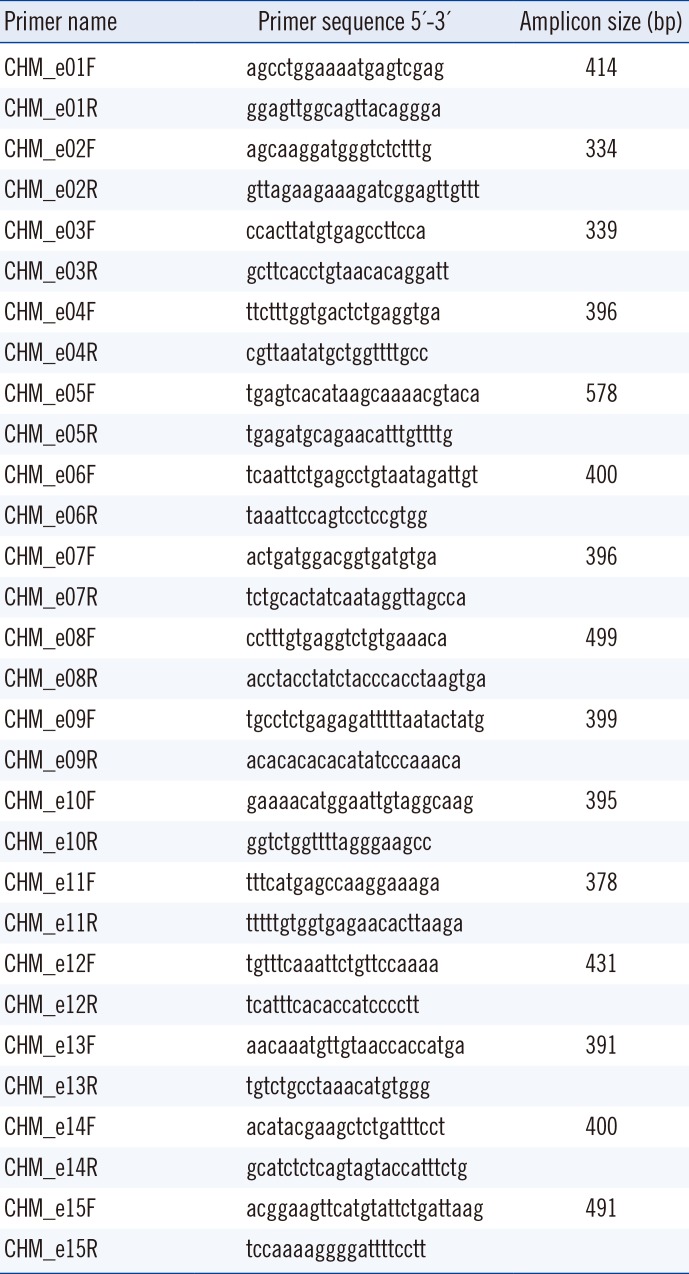1. Rafuse EV, McCulloch C. Choroideremia. A pathological report. Can J Ophthalmol. 1968; 3:347–352. PMID:
5727760.
2. Rubin ML, Fishman RS, McKay RA. Choroideremia. Study of a family and literature review. Arch Ophthalmol. 1966; 76:563–574. PMID:
5928144.
3. MacDonald IM, Hume S, Chan S, Seabra MC. Choroideremia. In : Pragon RA, Adam MP, Ardinger HH, Wallace SE, Amemiya A, Bean LJH, editors. GeneReviews [Internet]. Seattle, WA: University of Washington;1993-2015.
4. Roberts MF, Fishman GA, Roberts DK, Heckenlively JR, Weleber RG, Anderson RJ, et al. Retrospective, longitudinal, and cross sectional study of visual acuity impairment in choroideraemia. Br J Ophthalmol. 2002; 86:658–662. PMID:
12034689.
5. MacDonald IM, Chen MH, Addison DJ, Mielke BW, Nesslinger NJ. Histopathology of the retinal pigment epithelium of a female carrier of choroideremia. Can J Ophthalmol. 1997; 32:329–333. PMID:
9276121.
6. Seabra MC, Brown MS, Slaughter CA, Südhof TC, Goldstein JL. Purification of component A of Rab geranylgeranyl transferase: possible identity with the choroideremia gene product. Cell. 1992; 70:1049–1057. PMID:
1525821.
7. van den Hurk JA, Schwartz M, van Bokhoven H, van de Pol TJ, Bogerd L, Pinckers AJ, et al. Molecular basis of choroideremia (CHM): mutations involving the Rab escort protein-1 (REP-1) gene. Hum Mutat. 1997; 9:110–117. PMID:
9067750.
8. Pfeffer SR. Rab GTPases: master regulators of membrane trafficking. Curr Opin Cell Biol. 1994; 6:522–526. PMID:
7986528.
9. Sanchez-Alcudia R, Garcia-Hoyos M, Lopez-Martinez MA, Sanchez-Bolivar N, Zurita O, Gimenez A, et al. A comprehensive analysis of choroideremia: From genetic characterization to clinical practice. PLoS One. 2016; 11:e0151943. PMID:
27070432.
10. Sergeev YV, Smaoui N, Sui R, Stiles D, Gordiyenko N, Strunnikova N, et al. The functional effect of pathogenic mutations in Rab escort protein 1. Mutat Res. 2009; 665:44–50. PMID:
19427510.
11. O SJ, Kim SH, Lee HY. A case of choroideremia with recurrent anterior uveitis. Korean J Ophthalmol. 2003; 17:55–62. PMID:
12882509.
12. Lee CY, Shin TY. Choroideremia. J Korean Ophthalmol Soc. 1981; 22:433–438.
13. Korea National Research Institute of Health. Korean Reference Genome Database (KRGDB). Accessed on May 2016.
http://152.99.75.168/KRGDB.
15. Richards S, Aziz N, Bale S, Bick D, Das S, Gastier-Foster J, et al. Standards and guidelines for the interpretation of sequence variants: a joint consensus recommendation of the American College of Medical Genetics and Genomics and the Association for Molecular Pathology. Genet Med. 2015; 17:405–424. PMID:
25741868.
16. Ramsden SC, O'Grady A, Fletcher T, O'Sullivan J, Hart-Holden N, Barton SJ, et al. A clinical molecular genetic service for United Kingdom families with choroideraemia. Eur J Med Genet. 2013; 56:432–438. PMID:
23811034.
17. Shimizu K, Oishi A, Oishi M, Ogino K, Morooka S, Sugahara M, et al. Next-Generation Sequencing-based molecular diagnosis of choroideremia. Case Rep Ophthalmol. 2015; 6:246–250. PMID:
26327910.
18. Li S, Guan L, Fang S, Jiang H, Xiao X, Yang J, et al. Exome sequencing reveals CHM mutations in six families with atypical choroideremia initially diagnosed as retinitis pigmentosa. Int J Mol Med. 2014; 34:573–577. PMID:
24913019.
19. Furgoch MJ, Mewes-Arès J, Radziwon A, Macdonald IM. Molecular genetic diagnostic techniques in choroideremia. Mol Vis. 2014; 20:535–544. PMID:
24791138.

